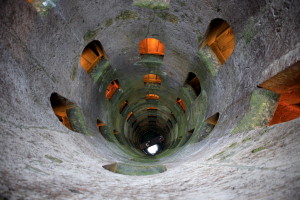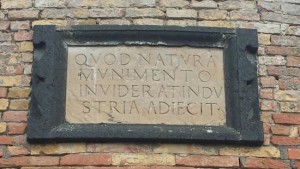orvieto-il-pozzo-di-san-patrizio[1]orvieto-il-pozzo-di-san-patrizio[1]orvieto-il-pozzo-di-san-patrizio[1]

There is a strong connection -or maybe more than one- between Umbria and Ireland. One of these, maybe the most important, is the one that refers to Saint Patrick and the well to Purgatory.
The original Irish legend, attested since the Middle Ages, is the legend linked to a deep cavern located on a small island of Lough Derg (Donegal). According to the legend, the cave was given by Christ to St. Patrick, who used to retire in prayer in the Island, so that he could show the pains of Hell to all the devotees who didn’t believe in it; they ventured up to reach the bottom, in return they would have received the remission of sins and access to Paradise. The cave was a place of pilgrimage until, in 1497, Pope Alexander VI imposed the closure of the cave and the destruction of the buildings on the island. It was reopened, not long after, and closed again in 1632 by Sir James Balfour and Sir James Stewart on behalf of the Irish Government. The cave was opened again for the third time in the reign of James II and closed for the last time in 1780.
In the Umbrian town of Orvieto an amazing place in the district of Terni, there is a Mysterious well, called Saint Patrick’s well.
Pope Clement VII returning from the sack of Rome decided to build this deep well to provide water to the city of Orvieto in times of siege. Orvieto stands on a high hill already impregnable and with the well, it finally became complitely unassailable. The well is about 62 meters High and 13 meters wide, it reaches the waters of the spring of S. Zeno. The project is to be attributed to Sangallo the Young, a genius in terms of architecture if we consider the complex structure of the well.
The well is surrounded by two independent double – helical stairs wich never intersect, and enlightened by 72 windows. This was made to facilitate and not to hinder those who went down to fetch water.
Going down the steps takes you into the unknown, into the depths of the earth, a long drive in the dark, where- in the end- you will come across the water, the source of life. For this reason it was not built brick by brick but digging directly into the bare earth, just as St. Patrick’s cave.

Recent Comments